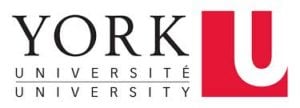Every day, entrepreneurs have turned to crowdfunding to fund their new business or product and are given two types of options for the campaign, all-or-nothing and flexible funding, also known as keep-it-all. Both possess great perks, but the key question for each campaign would be which option should it go with?

According to Inc., Toronto’s York University and Universite Lille Nord de France recently conducted a new study that compares the two types of funding options. The results suggested that if the entrepreneur is really serious about getting their project or product funded, they should go with the all-or nothing. Researchers stated, “Overall, [all-or-nothing] fundraising campaigns involved substantially larger capital goals, and were much more likely to be successful at achieving their goals.”
The study described both all-or-nothing and keep-it-all as, “In the all-or-nothing model, entrepreneurial firms set a capital raising goal below which the entrepreneurial firm does not keep any of the pledged funds, and the crowd does not get any reward. In the keep-it-all model, by contrast, the entrepreneurial firm can keep the entire pledged amount, albeit at higher fees as explained further herein, regardless of whether or not the stated capital raising goal is reached.”
 Researchers of the study looked at 47,139 campaigns from Indigogo over the years 2008-2013. Unlike other platforms, the crowdfunding giant has offered the option of picking either the all-or-nothing or keep-it-all since 2011. The data indicated that 95% of campaigns used the keep-it-all model, while 5% used the all-or-nothing model.
Researchers of the study looked at 47,139 campaigns from Indigogo over the years 2008-2013. Unlike other platforms, the crowdfunding giant has offered the option of picking either the all-or-nothing or keep-it-all since 2011. The data indicated that 95% of campaigns used the keep-it-all model, while 5% used the all-or-nothing model.
On average, the all-or-nothing campaigns were seeking to raise $31,355 (and median of $16,300), while campaign goals for keep-it-all are on average $19,677 (median of $10,000). The all-or-nothing campaigns have an average completion rate of 64%, while keep-it-all campaigns have a completion rate of 42%.
 All-or-nothing campaigns were also noted to attract an average of 188 backers, while keep-it-all attracted about 73. This is noted to be because the all-or-nothing tend to try harder than keep-it-all. 19 percent of the campaigns offered backers some kind of reward for funding as little as a dollar while 12 percent of the keep-it-all campaigns offer rewards.
All-or-nothing campaigns were also noted to attract an average of 188 backers, while keep-it-all attracted about 73. This is noted to be because the all-or-nothing tend to try harder than keep-it-all. 19 percent of the campaigns offered backers some kind of reward for funding as little as a dollar while 12 percent of the keep-it-all campaigns offer rewards.
Along with rewards, the all-or-nothing campaigns tend to be more descriptive, pictures, and video pitches of the products/businesses. Unfortunately the study revealed “projects funded with a KIA model are more prone to lead to fraud in the event of underfunding.”

